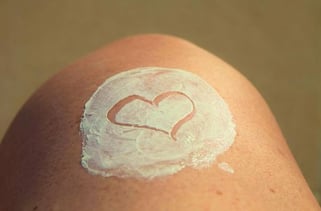Your guide to sunscreen jargon
When it comes to protecting our skin from sun damage and sunburn, we know we should use sunscreen as often as possible. But many of us get confused by the jargon used on sunscreen labels.

Recent statistics reported by Superdrug - a health and beauty retailer in the UK - revealed that 60 per cent of people are unaware that the SPF (Sun Protection Factor) rating printed on sunscreen labels does not solely guarantee protection from potential sun damage.
The poll of 2,000 adults found that nearly half of people don't know what SPF means, while one in 10 incorrectly think the SPF number shows how many minutes they can stay out in the sun.
With so many different terms used on sunscreen labels - such as UVA, UVB and broad-spectrum - it isn't surprising that we're getting confused. But as Australia is the skin cancer capital of the world, it's important that we understand how to protect our skin.
What is SPF?
SPF stands for Sun Protection Factor. It is a measure of how well a sunscreen product will protect your skin against UVB (ultraviolet B) radiation. SPF is rated on a scale of 2-50+ based on the level of protection it offers, with the lower end of the spectrum offering the least amount of protection and the higher end of the spectrum offering the strongest level of UVB protection.
So, the higher the SPF, the greater the protection of your sunscreen.
On average, it takes 10 minutes for unprotected skin to show signs of burning. By applying an SPF30 sunscreen, your skin will be protected 30 times longer - so 300 minutes.
However, other factors can impact the amount of time you can actually spend in the sun, such as your skin type and the UV intensity, which varies from day to day. An SPF30 sunscreen will provide longer protection to a dark-skinned person than a light-skinned person.
What is the difference between UVB and UVA?
UVB rays (burning rays) cause reddening and burning of the skin's outer layer, while UVA rays (ageing rays) penetrate into the deeper layers of the skin and has lasting effects; it is photo-ageing and impacts elastin, leading to sun-induced skin ageing such as wrinkles and pigmentation, as well as skin cancer.
A good sunscreen product should have a UVA rating of at least 4 out of 5 stars. This is a measure of the absorption of UVA radiation. It's a good idea to check the UV ratings on sunscreen products rather than just the SPF, and choose a product that has a high SPF and a high UVA star rating.
What does broad-spectrum protection mean?
If a sunscreen has broad-spectrum protection, it has the ability to protect against the harmful effects of both UVA and UVB radiation. To be classified as broad-spectrum, a sunscreen product must absorb or reflect at least 90 per cent of UV rays from the 290 to 400 nanometres wavelength range.
What does water-resistant mean?
Manufacturers can claim a sunscreen is water resistant if the SPF drops by as much as half after two 20-minute periods of immersion. That means that if you go swimming wearing SPF30 sunscreen, it could drop to SPF15 or less when you get out.
It's important to wear sunscreen while swimming because UV radiation levels 50cm below the surface of the water are still 40 per cent as intense as on the surface. We also need to protect the parts of our bodies that are above the water, as water reflects around a quarter of UV radiation and can intensify the harmful effects. Always reapply sunscreen after getting wet.
Harmful ingredients in sunscreen
Some sunscreen products contain harmful ingredients such as octisalate and ocrtinoxate which only absorb UVB rays and don't offer full protection. We should ensure the sunscreen we choose contains zinc oxide which covers both UVA and UVB rays and is a mineral-based ingredient.
- Tags:
- Prevention
